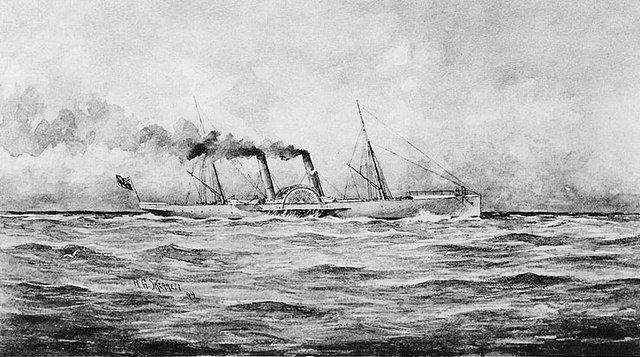Blockade runners of the American Civil War
During the American Civil War, blockade runners were used to get supplies through the Union blockade of the Confederate States of America that extended some 3,500 miles (5,600 km) along the Atlantic and Gulf of Mexico coastlines and the lower Mississippi River. The Confederacy had little industrial capability and could not indigenously produce the quantity of arms and other supplies needed to fight against the Union. To meet this need, numerous blockade runners were constructed in the British Isles and were used to import the guns, ordnance and other supplies that the Confederacy desperately needed, in exchange for cotton that the British textile industry needed greatly. To penetrate the blockade, these relatively lightweight shallow draft ships, mostly built in British shipyards and specially designed for speed, but not suited for transporting large quantities of cotton, had to cruise undetected, usually at night, through the Union blockade. The typical blockade runners were privately owned vessels often operating with a letter of marque issued by the Confederate government. If spotted, the blockade runners would attempt to outmaneuver or simply outrun any Union Navy warships on blockade patrol, often successfully.

Advance Civil War blockade-runner
Blockade-runner mail to New Orleans via Nassau, Bahamas, stamped incoming ship 10-cents postage due
CSS Atlanta, made many runs through the blockade carrying supplies for the Confederate army
A Confederate blockade runner at anchor at St. George's, Bermuda
The Union blockade in the American Civil War was a naval strategy by the United States to prevent the Confederacy from trading.
Scott's great snake, J.B. Elliot
The Confederate blockade runner SS Banshee in 1863
Blockade runner SS A.D. Vance, captured by the Union Navy and recommissioned as Advance
CSS David engaging New Ironsides on 5 October 1863, during the blockade of Charleston








